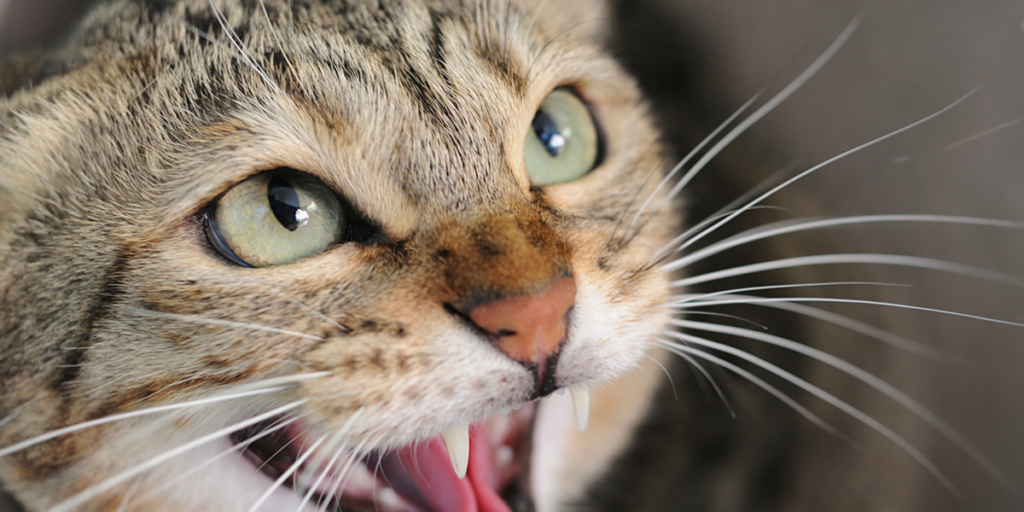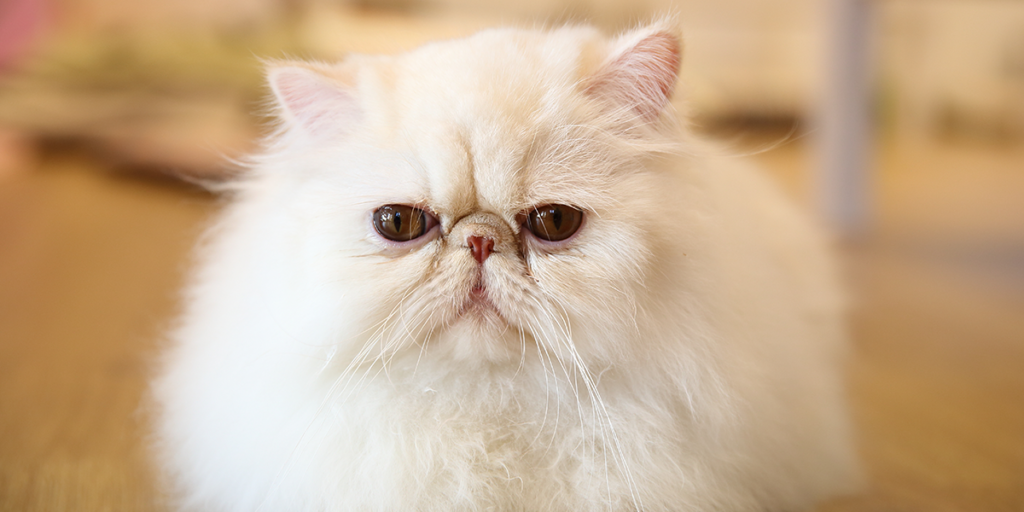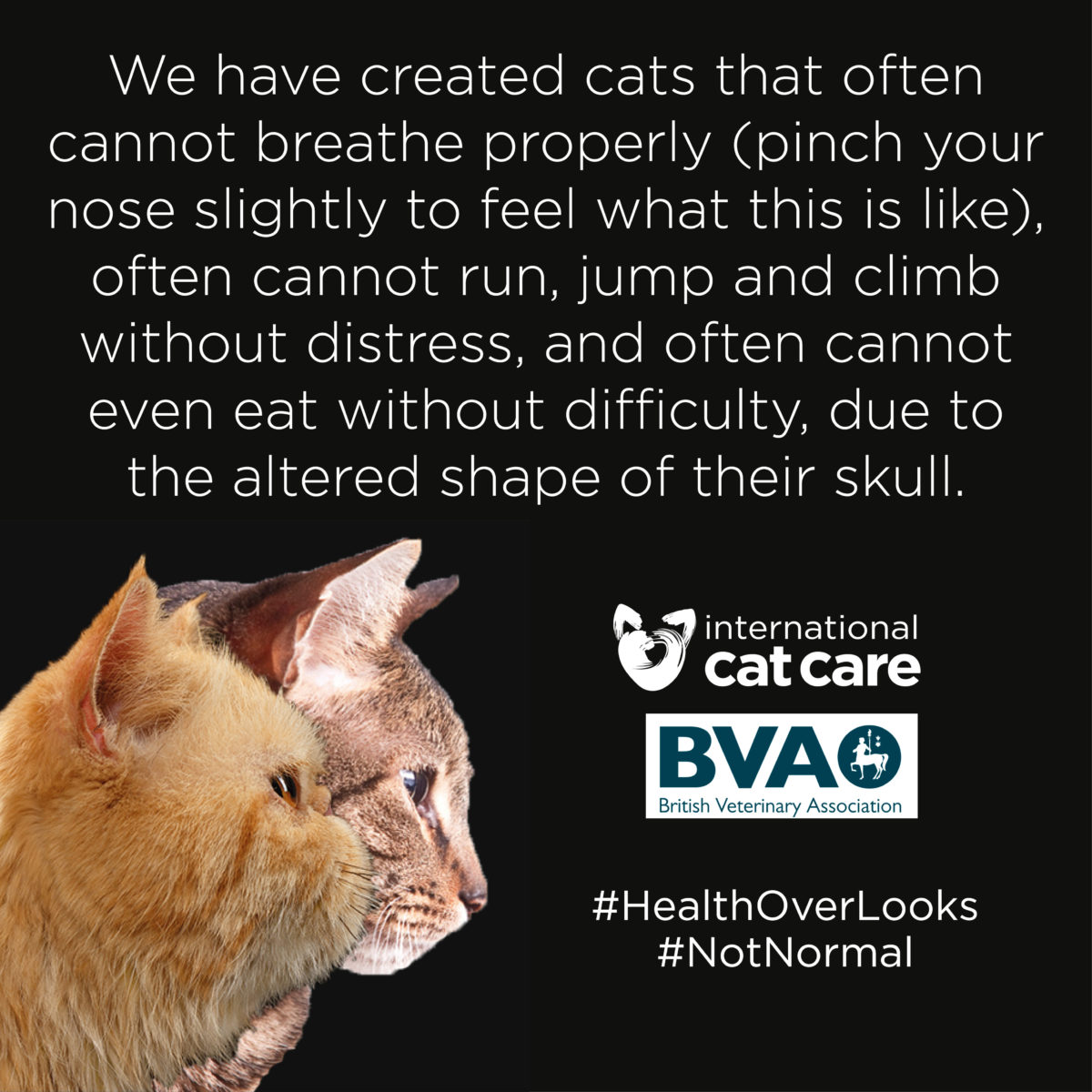In “Recognizing Signs of Distress in Persian Cats,” you will learn how to identify when your beloved Persian cat may be experiencing distress. As a cat owner, it’s important to be able to recognize the subtle signs that may indicate your cat is not feeling well or is in discomfort. By understanding these signs, you can quickly take the necessary steps to address any potential health issues and ensure the well-being of your feline companion.
Recognizing Signs of Distress in Persian Cats
Persian cats are known for their striking beauty and luxurious coats, but they can also be prone to experiencing distress. As a responsible pet owner, it is important to be able to recognize the signs of distress in your Persian cat. By understanding these signs and addressing them promptly, you can ensure the well-being and happiness of your beloved feline companion.
Understanding Persian Cats
Before we delve into the signs of distress, let’s first gain a better understanding of Persian cats. These majestic felines are characterized by their long, flowing coats, round faces, and sweet expressions. They have a calm and gentle temperament, making them excellent companions.
Persian cats are known for their affectionate and loving nature. They thrive in a calm and peaceful environment, and they value routine and predictability. These cats love to be pampered and enjoy spending quiet time with their humans. However, their long fur requires regular grooming to prevent matting and tangles.
Like all cats, Persian cats can experience various health concerns throughout their lives. Some common issues include polycystic kidney disease, respiratory problems, dental issues, and eye infections. It is crucial to be aware of these potential health concerns as they can contribute to distress in Persian cats.
Common Signs of Distress
Recognizing the signs of distress in your Persian cat is imperative for their overall well-being. Cats, including Persians, are known for their ability to hide their discomfort, so it is essential to be observant and attentive to changes in their behavior and physical appearance.
Some common signs of distress in Persian cats include:
Physical Signs of Distress
- Loss of Appetite or Weight Changes: If your Persian cat suddenly loses interest in food or experiences significant weight loss, it can indicate distress or an underlying health issue.
- Vomiting or Diarrhea: Frequent vomiting or diarrhea can be signs of digestive disorders or other underlying health problems.
- Breathing Difficulties: Wheezing, coughing, or labored breathing should never be ignored, as they can indicate respiratory issues or allergies.
- Visible Injuries or Wounds: Any visible cuts, wounds, or injuries should be examined and treated by a veterinarian.
- Abnormal Discharge: Unusual discharge from the eyes, ears, nose, or any other part of the body can be a sign of infection or underlying health issues.
- Changes in Coat or Skin: Flakiness, redness, bald patches, or any changes to the coat or skin can indicate various skin conditions or allergies.
- Excessive Shedding or Hair Loss: While shedding is normal for Persian cats, excessive hair loss or bald patches may indicate issues such as stress, skin conditions, or hormonal imbalances.
- Unusual Odors: Foul or strong odors emanating from your cat could be a sign of infection or dental problems.
Behavioral Signs of Distress
- Unusual Aggression or Withdrawal: Persians are typically calm and gentle, so any sudden aggression or withdrawal can indicate distress or discomfort.
- Excessive Hiding or Isolation: If your Persian cat is spending an unusually long time hiding or isolating themselves, it may be a sign of stress or illness.
- Restlessness or Pacing: Constant movement, pacing, or restlessness can be signs of anxiety or physical discomfort.
- Excessive Vocalization or Meowing: Persians are not known for being excessively vocal, so increased meowing or vocalization may indicate distress or the need for attention.
- Destructive Behavior: Scratching furniture, excessive chewing, or other destructive behaviors can be signs of stress or boredom.
- Avoidance of Social Interaction: If your Persian cat suddenly avoids social interaction with family members or other pets, it may indicate distress or discomfort.
- Changes in Sleep Patterns: Insomnia, restless sleep, or excessive sleeping can all be indicators of distress or pain.
- Lack of Interest in Play or Activities: Persian cats typically enjoy playtime, so a sudden lack of interest could indicate distress or illness.
- Changes in Litter Box Behavior: Avoiding the litter box or changes in litter box habits can be signs of distress, urinary tract issues, or other health problems.
- Marking Territory: If your typically well-trained Persian starts marking their territory indoors, it may be a sign of distress or the need for attention.
Environmental Factors
Understanding the potential environmental factors that can contribute to distress in Persian cats is essential for their overall well-being. Cats are sensitive creatures, and certain changes in their surroundings can cause stress and anxiety.
Some common environmental factors that can contribute to distress in Persian cats include:
- Loud Noises and Sudden Changes: Persian cats prefer calm and quiet environments, so sudden loud noises or drastic changes in their surroundings can cause distress.
- Environmental Stressors: Persians are sensitive to environmental stressors such as crowded spaces, excessive heat or cold, or strong odors.
- Temperature and Climate: Extreme temperatures or fluctuations can make Persian cats uncomfortable and contribute to distress.
- Unfamiliar Surroundings or People: Persian cats thrive on routine and familiarity, so exposure to unfamiliar surroundings or people can lead to stress and anxiety.
- Lack of Privacy or Safe Spaces: Persian cats appreciate having their safe spaces where they can retreat for relaxation and solitude. The absence of such spaces can lead to distress.
Health Issues and Distress
Persian cats, like any other breed, can experience various health issues that can contribute to distress. Being aware of these potential health concerns can help you detect distress in your Persian cat and take appropriate action.
Some common health issues in Persian cats include:
- Urinary Tract Infections: Persian cats are prone to urinary tract infections, which can cause discomfort, pain, and distress.
- Respiratory Infections: Persians have short noses and flat faces, which can make them more susceptible to respiratory infections and breathing difficulties.
- Digestive Disorders: Persian cats can experience digestive issues such as gastrointestinal disorders, food intolerances, or allergies, which can lead to distress.
- Allergies and Skin Irritations: Persians can be prone to allergies and skin irritations, leading to itching, discomfort, and distress.
- Dental Problems: Dental issues such as gum disease, tooth decay, and oral infections can cause pain and distress in Persian cats.
- Eye and Ear Infections: Persians can be susceptible to eye and ear infections, which can cause discomfort and distress.
- Arthritis and Joint Pain: The breed’s body structure makes Persians prone to arthritis and joint pain, leading to distress and discomfort.
- Heart or Kidney Disease: Persian cats are more prone to heart and kidney diseases, which can cause distress and various symptoms.
- Cancer or Tumors: Like all cats, Persian cats can develop cancer or tumors, which can cause pain, distress, and other symptoms.
- Metabolic Disorders: Certain metabolic disorders can lead to weight changes, hormonal imbalances, and other symptoms of distress in Persian cats.
Preventing Distress in Persian Cats
While it may not be possible to completely eliminate all instances of distress, there are steps you can take to promote the well-being and happiness of your Persian cat. By addressing potential stressors and maintaining their overall health, you can minimize distress and ensure a thriving environment for your feline friend.
Here are some ways to prevent distress in Persian cats:
Providing a Safe and Stimulating Environment
Ensuring that your Persian cat has a safe and stimulating environment is crucial for their mental and physical well-being. Provide them with plenty of vertical spaces, scratching posts, and toys to keep them engaged and mentally stimulated. Additionally, create cozy and comfortable sleeping areas where they can retreat for relaxation.
Establishing Routine and Consistency
Persian cats thrive on routine and predictability. Establish a consistent feeding schedule, playtime routine, and maintain a regular sleep schedule to provide stability and reduce stress. Minimizing abrupt changes in their daily routine can greatly contribute to their overall well-being.
Handling Changes and New Experiences
Persian cats can be sensitive to changes, so it is important to introduce new experiences gradually and with care. Whether it’s introducing new people, a new pet, or moving to a new home, ensure that the transition is as smooth and stress-free as possible. Provide them with their safe spaces and familiar belongings to help them adjust.
Promoting Regular Exercise and Play
Regular exercise and playtime are important for keeping your Persian cat physically and mentally stimulated. Engage in interactive play sessions using toys that encourage their natural hunting instincts. Not only will this keep them physically active, but it will also provide an outlet for pent-up energy and reduce stress.
Creating a Stress-Free Zone
Designating a stress-free zone in your home can provide your Persian cat with a sanctuary where they can retreat when they need a break. This area should be quiet, free from distractions, and equipped with their favorite toys, comfortable bedding, and access to fresh water and food.
Monitoring and Managing Stress Levels
Regularly monitoring your Persian cat’s stress levels is crucial for their well-being. Look out for signs of distress and take appropriate steps to alleviate their discomfort or anxiety. Provide them with positive reinforcement, reassurance, and gentle interaction to help them feel secure and loved.
Socialization and Positive Reinforcement
Socialization plays a vital role in ensuring that your Persian cat is comfortable and confident in various situations. Gradually introduce them to new people, pets, and experiences using positive reinforcement techniques. Reward them with treats, praise, and affection to associate these encounters with positive experiences.
Minimizing Exposure to Hazards
Ensure that your Persian cat’s environment is free from potential hazards that can cause distress or harm. Keep toxic plants, chemicals, and medications out of reach. Additionally, secure windows and balconies to prevent accidents or risky situations.
Recognizing and Addressing Health Concerns
Regular veterinary check-ups are crucial for monitoring your Persian cat’s health and detecting any potential issues early on. Be proactive in addressing health concerns and seek prompt medical attention if you notice any changes in your cat’s behavior, appetite, or physical appearance.
Early Detection and Intervention
Being vigilant and attentive to your Persian cat’s well-being is key in recognizing distress early on. The sooner you detect signs of distress, the quicker you can intervene and provide the necessary care and support. Prompt intervention can help prevent further complications and ensure a speedy recovery.
By implementing these preventive measures and providing a nurturing and supportive environment, you can greatly reduce the likelihood of distress in your Persian cat.

Creating a Comfortable Environment
Creating a comfortable environment is essential for the well-being of your Persian cat. As these cats spend a significant amount of time indoors, it is crucial to provide them with a safe, secure, and stimulating environment that meets their physical and emotional needs.
Here are some tips for creating a comfortable environment for your Persian cat:
Secure and Relaxing Sleeping Area
Persian cats enjoy their beauty sleep and need a cozy and secure sleeping area. Invest in a high-quality cat bed with soft bedding and ensure that it is placed away from drafty areas or direct sunlight. This will provide them with a peaceful and comfortable space to rest.
Proper Litter Box Placement
Proper litter box placement is essential to ensure your Persian cat’s comfort and hygiene. Place the litter box in a quiet and accessible location, away from noisy areas and food bowls. Make sure to keep it clean and odor-free by scooping it daily and fully replacing the litter on a regular basis.
Access to Fresh Water and Food
Persian cats, like all cats, require access to fresh water and high-quality cat food. Keep their water bowls clean and filled with fresh water at all times. Provide a balanced diet that meets their nutritional needs and consult with your veterinarian for specific dietary recommendations.
Providing Enrichment and Toys
Stimulating your Persian cat’s mind and body is essential for their overall well-being. Provide them with a variety of toys that cater to their natural instincts, such as interactive puzzle toys, feather toys, or catnip-filled toys. Rotate toys regularly to prevent boredom and keep them engaged.
Temperature and Humidity Control
Persian cats are sensitive to extreme temperatures, so it is important to maintain a comfortable environment for them. Keep your home at a moderate temperature and provide your cat with warm spaces during colder months. Consider using a humidifier to prevent dry air, which can be detrimental to their skin and coat health.
Reducing Noise and Distractions
Persian cats thrive in calm and quiet environments, so it is important to minimize loud noises and distractions. Provide them with a designated quiet area where they can retreat when they need a break from noise or external stimuli.
Safe and Cat-Friendly Furniture
Ensure that your furniture is safe and suitable for Persian cats. Avoid pieces with sharp edges or small crevices where your cat can get stuck. Opt for sturdy and cat-friendly furniture that can withstand scratching and provide them with comfortable resting spots.
Scratching Posts and Toys
Persian cats have a natural instinct to scratch, which helps keep their nails healthy and allows them to mark their territory. Provide multiple scratching posts or boards throughout your home to prevent your cat from scratching furniture. Sprinkle them with catnip or use enticing scratching pads to encourage their use.
Personalized Spaces for Privacy
Persian cats value their privacy, so it is important to provide them with personalized spaces where they can retreat and relax. Enclosed cat trees, cozy hiding spots, or even dedicated rooms can serve as safe havens where your cat can escape from the hustle and bustle of daily life.
Multiple Vertical Perches
Persian cats love to observe their surroundings from higher vantage points. Installing cat shelves, wall-mounted perches, or a cat tree will provide them with the elevation they crave. These elevated spots not only fulfill their natural instincts but also offer opportunities for exercise and mental stimulation.
By creating a comfortable environment that meets your Persian cat’s physical and emotional needs, you are providing them with the ideal conditions to thrive and lead a happy and stress-free life.

Regular Veterinary Check-ups
Regular veterinary check-ups are crucial for maintaining the health, well-being, and longevity of your Persian cat. These check-ups allow your veterinarian to monitor their overall health, detect any potential issues early on, and provide preventive care.
Importance of Veterinary Care
Regular veterinary care is essential for your Persian cat’s well-being. Your veterinarian can help you establish a proper healthcare routine, provide essential vaccinations, and address any health concerns specific to Persian cats.
Routine Check-ups and Vaccinations
Scheduling routine check-ups with your veterinarian is important to ensure that your Persian cat is healthy and up to date with vaccinations. During these visits, your veterinarian will perform a thorough examination, check vital signs, and address any concerns you may have. They can also administer vaccines to protect your cat from common feline diseases.
Parasite Prevention and Control
Parasites such as fleas, ticks, and worms can pose a significant risk to your Persian cat’s health. Regular veterinary check-ups allow your veterinarian to monitor and provide appropriate parasite prevention and control measures. This can include prescribed medications, flea and tick preventatives, and regular deworming treatments.
Dental Examinations and Cleanings
Dental health is a crucial aspect of your Persian cat’s overall well-being. Regular dental examinations and cleanings can help prevent periodontal disease, tooth decay, and other dental issues. Your veterinarian can assess your cat’s dental health and recommend appropriate dental care routines or procedures to ensure optimal oral hygiene.
Blood Tests and Health Screenings
Regular blood tests and health screenings can detect underlying health issues or diseases that may not be visible during a physical examination. These tests can include complete blood counts, blood chemistry profiles, and screening for common feline diseases. Early detection is key in managing and treating potential health concerns.
Early Disease Detection and Treatment
Unfortunately, Persian cats are prone to certain health conditions, and early detection is crucial in providing timely treatment. Regular veterinary check-ups allow for early disease detection, increasing the chances of successful treatment and better outcomes for your cat.
Medication and Preventive Treatments
If your Persian cat requires medication or preventive treatments, regular veterinary check-ups are essential for monitoring the effectiveness and safety of these treatments. Your veterinarian can adjust dosages, prescribe additional medications if needed, and provide guidance on administering medications correctly.
Senior Cat Care
As Persian cats age, their health needs may change. Regular veterinary check-ups are particularly important for senior cats to monitor their overall health, address age-related issues, and provide appropriate senior cat care and supportive therapies.
By prioritizing regular veterinary check-ups, you are ensuring that your Persian cat receives appropriate preventive care, early disease detection, and necessary treatments to lead a healthy and fulfilling life.

Proper Nutrition and Hydration
Proper nutrition and hydration are essential for maintaining your Persian cat’s overall health and well-being. Providing a balanced diet, adequate water supply, and addressing their specific dietary needs contribute to their vitality and longevity.
Importance of Balanced Diet
A balanced diet is crucial for meeting your Persian cat’s nutritional needs. Proper nutrition provides the necessary energy, vitamins, minerals, and other essential nutrients needed for their growth, development, and overall health.
High-Quality Cat Food
Investing in high-quality cat food is vital for your Persian cat’s health. Look for cat food formulas that are specifically formulated for Persian cats, taking into account their unique dietary requirements. These formulas often contain the right balance of nutrients and support their coat health, digestion, and immune system.
Feeding Schedule and Portions
Establishing a consistent feeding schedule and monitoring portion sizes is important to prevent overfeeding or underfeeding. Persian cats are prone to obesity, so it is crucial to be mindful of their calorie intake. Consult with your veterinarian for specific feeding guidelines and adjust portions based on your cat’s age, weight, activity level, and overall health.
Avoiding Harmful Human Foods
Some human foods can be toxic or harmful to Persian cats. It is important to avoid feeding them foods such as chocolate, caffeine, onions, garlic, grapes, raisins, and alcohol. These can cause digestive issues, toxic reactions, or other health concerns in cats.
Hydration and Water Availability
Proper hydration is essential for your Persian cat’s well-being. Ensure that your cat has access to fresh, clean water at all times. Consider using a water fountain or provide multiple water bowls in different locations throughout your home to encourage drinking.
Special Dietary Needs and Supplements
As your Persian cat ages or if they have specific health concerns, they may require specialized diets or dietary supplements. Consult with your veterinarian to determine if your cat has any specific dietary needs or if additional supplements, such as joint support or omega-3 fatty acids, are beneficial for their overall health.
Weight Management
Persian cats are prone to obesity, which can lead to various health issues. Maintaining a healthy weight is crucial for their overall well-being. Monitor your cat’s weight regularly and adjust their diet as needed to ensure they maintain a healthy body condition.
By providing a balanced diet, monitoring their portion sizes, and addressing their specific nutritional needs, you are ensuring that your Persian cat receives the necessary nutrients to thrive and lead a healthy life.

Behavioral Training and Socialization
Behavioral training and socialization are essential components of raising a well-adjusted and happy Persian cat. By using positive reinforcement techniques, setting boundaries, and facilitating positive interactions, you can foster a strong bond with your cat and help them navigate their environment confidently.
Positive Reinforcement Techniques
Positive reinforcement is a powerful training method that rewards desired behaviors with praise, treats, or play. Persian cats respond well to positive reinforcement, making it an effective approach for training and reinforcing good behavior. Reward your cat when they exhibit behaviors you want to encourage, such as using the scratching post or following commands.
Basic Obedience Training
Basic obedience training is beneficial in teaching your Persian cat essential commands and manners. Start with simple commands like “sit,” “stay,” and “come.” Consistency, patience, and short training sessions are key to successful obedience training.
Teaching Boundaries and Commands
Establishing clear boundaries and teaching your Persian cat basic commands is important for their safety and well-being. Teach them commands like “no,” “off,” or “stay,” and reinforce these commands consistently. This helps them understand what is expected and promotes good behavior.
Introducing New Environments or People
Persian cats can be sensitive to new environments or people. Gradually introduce them to new experiences, people, or environments to prevent stress or anxiety. Use positive reinforcement, treats, and gentle touch to help them associate these new experiences with positive outcomes.
Socializing with Other Animals
Proper socialization with other animals is important for your Persian cat’s emotional well-being. Introduce them to other pets gradually and under controlled circumstances. Supervise interactions and provide a safe space where your cat can retreat if they feel overwhelmed or stressed.
Addressing Separation Anxiety
Persian cats are known for their strong bonds with their human companions and can be prone to separation anxiety. Address separation anxiety by gradually accustoming your cat to your absence. Before leaving, engage in playtime, provide stimulating toys, and create a stress-free environment.
Behavior Modification Strategies
If your Persian cat displays unwanted behaviors, such as scratching furniture or excessive meowing, behavior modification strategies can help address these issues. Redirect their behavior to appropriate alternatives, such as providing scratching posts or interactive toys to alleviate boredom or anxiety.
Professional Training and Support
In some cases, professional training or support from a veterinarian or animal behaviorist may be necessary. These professionals can provide guidance, behavior modification techniques, and personalized strategies to address specific behavioral issues or concerns.
Understanding Cat Body Language
Understanding your Persian cat’s body language is crucial in determining their emotional state and needs. Observe their ear positions, tail movements, vocalizations, and body postures to gauge their comfort level and address any distress or anxiety promptly.
By prioritizing positive reinforcement, teaching boundaries, and facilitating socialization, you can raise a well-behaved and socially adept Persian cat who thrives in various environments.
These are just a few of the many important aspects to consider when recognizing signs of distress in Persian cats. By being attentive and responsive to your cat’s needs, you can create a nurturing and stress-free environment that promotes their overall well-being. Remember, your Persian cat relies on you for their care and happiness, so it is essential to prioritize their health and comfort.

